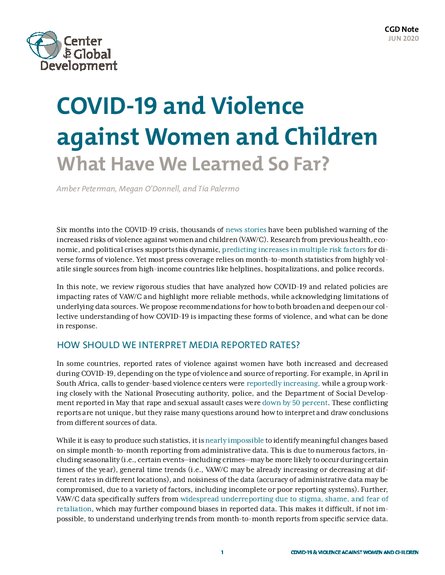
Six months into the COVID-19 crisis, thousands of news stories have been published warning of the increased risks of violence against women and children (VAW/C). Research from previous health, economic, and political crises supports this dynamic, predicting increases in multiple risk factors for diverse forms of violence. Yet most press coverage relies on month-to-month statistics from highly volatile single sources from high-income countries like helplines, hospitalizations, and police records.
In this note, we review rigorous studies that have analyzed how COVID-19 and related policies are impacting rates of VAW/C and highlight more reliable methods, while acknowledging limitations of underlying data sources. We propose recommendations for how to both broaden and deepen our collective understanding of how COVID-19 is impacting these forms of violence, and what can be done in response.
